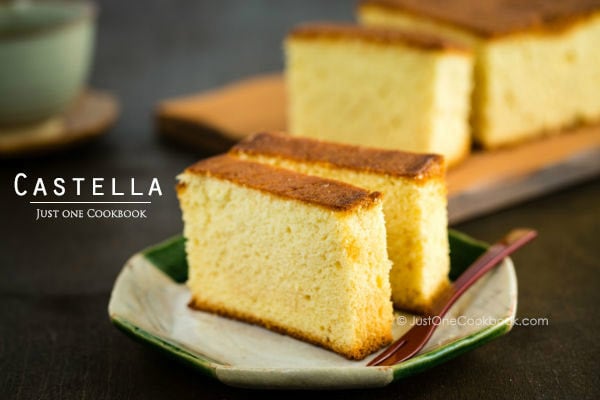
Japanese Castella Cake, or Kasutera in Japanese, is a popular Japanese honey
spongecake which was originally introduced by the Portuguese merchants to Nagasaki area in the 16th century. The name is derived from Portuguese Pão de Castela, meaning “bread from Castile”. Castella is made of just 4 basic ingredients: bread flour, eggs, sugar, and honey.
Traditionally Japanese Castella cake is baked slowly in a wooden frame to create the soft smooth texture for the sponge because a metal baking pan would transfer the heat too fast and it would become too dry.
Author: Namiko Chen
Serves: 2 Castella Cakes
Ingredients
- 6 large eggs, at room temperature (very important!)
- 1 cup (218 g) sugar
- 1 cup + 2½ Tbsp (200 g) bread flour*
- 5 Tbsp. honey
- 2 ½ Tbsp. warm water
- 1 Tbsp. honey
- ½ Tbsp. warm water
You will need
- 2 1-lb loaf pans (8.50 x 4.50 x 2.75 inch / 22 x 11 x 7 cm)
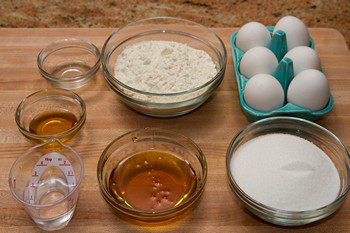
Instructions
- Cut parchment paper to fit the baking pans (See the video for this process).
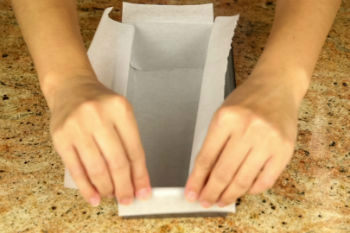
- Preheat oven to 320F (160C).
- Sift the bread flour with the sifter or a fine-meshed strainer twice. Holding the handle with one hand and tapping the strainer gently with the other, the flour will gradually sift through the strainer.
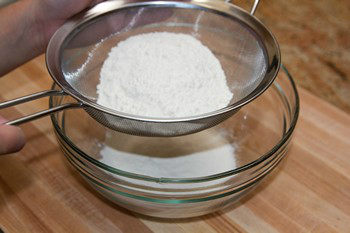
- Add 2 ½ Tbsp. warm water to honey and whisk well.

- Fit the mixer with the whisk attachment. Crack eggs into the bowl and vigorously whisk until combined and frothy.
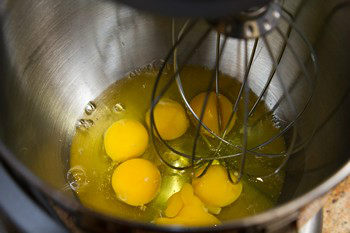
- Add the sugar.
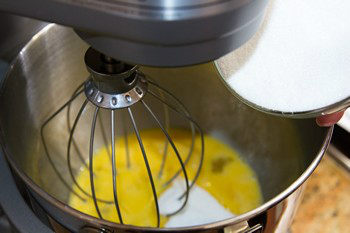
- Beat the eggs and sugar on high speed (Speed 10) for 5 minutes.** The volume of the beaten eggs will increase about 4 times. The texture will be thick and the color will be pale yellow. When you stop the mixer and lift the whisk attachment, the mixture should fall in ribbons.

- Add the honey mixture into the egg mixture and whisk on low speed (Speed 2) until combined, about 30 seconds.
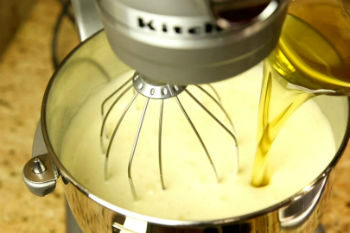
- Add the bread flour at three separate times: add ⅓ of the bread flour and whisk on low speed (Speed 2) for 15 seconds, then add more flour and whisk for 15 seconds. Add the last remaining portion and whisk until just combined for about 1 minute. Do not overmix.

- Spray the loaf pans with oil and spread out evenly with pastry brush.

- Put the parchment paper in the pans and make sure the paper sticks to the pans. If not, add oil and spread out evenly with a brush.
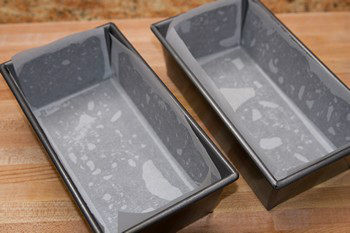
- Pour the batter into the pans (about 80% full).
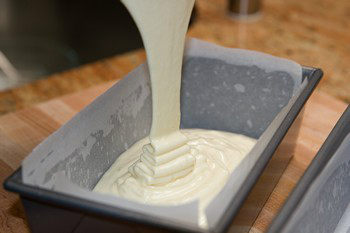
- Using a skewer, draw a zigzag line to remove the air bubbles in the batter.
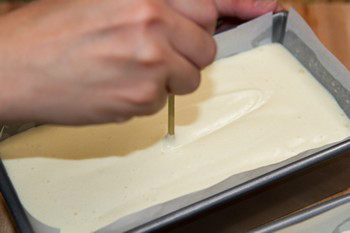
- Level batter in each pan by holding pan 2-inches above counter dropping it flat onto counter. Do this several times to release air bubbles.
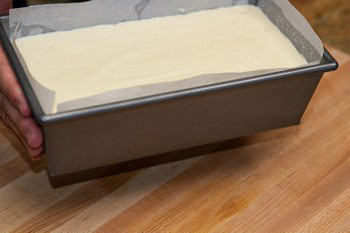
- Bake at 320F (160C) on middle rack of oven for 35 to 40 minutes* or until golden brown and a skewer inserted in the center comes out clean. I bake for 35 minutes and keep my oven door ajar for a few minutes then I take out the cake. When done, cake sides will pull away from pan slightly; top will be flat and feel spongy when pressed with finger.
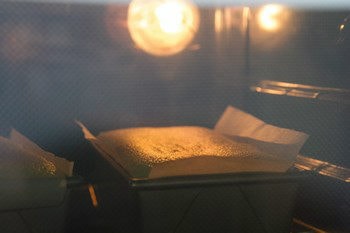
- Mix the honey and warm water in a bowl and apply the honey mixture on top of the cake with a pastry brush.

- Place a sheet of plastic wrap on the counter top. Take out the cake from the pan to the plastic wrap, top facing down. Gently peel off parchment paper.

- Immediately wrap the cake with plastic wrap to keep the moisture and while it's hot store in the refrigerator overnight (at least 12 hours), keeping the top side facing down. This will help the cake have more fine and moist texture.
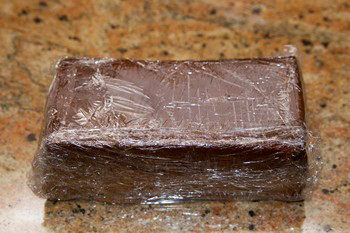
- To serve, slice off the sides of the cake with a sharp bread knife and cut into ¾ to 1 inch thick slices (you get 7-8 slices total). It's better if you bring the cake to room temperature before serving. To save for later, wrap individual pieces with plastic wrap and freeze up to a month or keep in fridge up to 5 days.
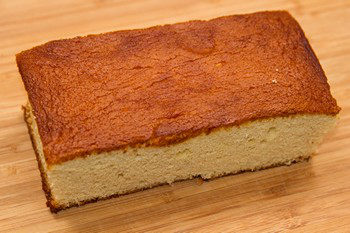





Комментариев нет:
Отправить комментарий